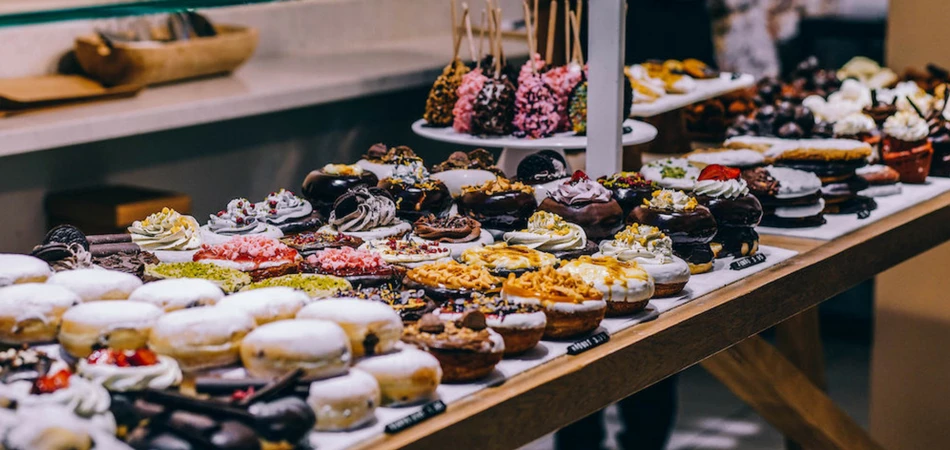
Member Article
Are we sweet enough?
There’s lots of solid evidence to suggest that free sugars are one of the biggest culprits in the obesity epidemic and related health issues such as diabetes, which has also proven to dramatically increases the chances of getting coronary heart disease. Understanding sugar and what sugar is classed as good and not so good for us can be confusing, so let’s dig deeper and look at some facts.
Free sugars are the type of sugars that most adults and children in the UK consume too much of. These include any sugars added to food or drinks for example, biscuits, chocolate, flavoured yogurts, breakfast cereals and fizzy drinks. This type of sugar is added to foods by manufacturers. Sugars in honey, syrups (such as maple, agave and golden), nectars (such as blossom), and unsweetened fruit juices, vegetable juices and smoothies occur naturally but still count as ‘free sugars’.
So what about sugar in fruit, veg and milk? Sugar found naturally in milk, fruit and vegetables doesn’t count as free sugar and we don’t need to cut down on these sugars, but be aware they are included in the “total sugar” figure found on food labels…why don’t they separate free sugar and sugar on the food labels? Very good question. It would certainly help us out wouldn’t it!
When looking for how much sugar is in certain foods have a look on the label and you’ll see “Carbohydrates of which sugars” figure. This describes the the total amount of sugar from all sources. For example, plain yogurt may contain as much as 8g per serving, but none of these are free sugars, as they all come from milk. An apple would be the same, it may have 11g of total sugar (depending on the size and how ripe it is) but it’s still not considered free sugars unless is it juiced or puréed. So food containing fruit or milk are healthier choices than ones containing lots of free sugars, even if the two products contain the same total amount of sugar.
So what is considered high and low when it comes to sugar? The total sugar considered to either be high or low fall above or below the following thresholds:
High (only occasionally) : more than 22.5g of total sugars per 100g Medium (ok most of the time): 5.1g - 22.5g of total sugars per 100g Low (a healthier choice): 5g or less of total sugars per 100g
The way in which ingredients are listed on products has a meaning. The first ingredient listed is what the majority of that product contains. For instance, a pack of sausages may state: Pork (85%), Water, Free Range Egg White, Sea Salt and so on. The first ingredient listed is pork, which means the majority of this product contains pork, sometimes they will even list the percentage. Anything listed in bold is an allergen.
Free sugar can also be seen in many forms on the ingredients list so as well as ‘sugar’ look out for things such as; cane sugar, honey, brown sugar, high-fructose corn syrup, fruit juice concentrate/purées, corn syrup, fructose, sucrose, glucose, crystalline sucrose, nectars (such as blossom), maple and agave syrups, dextrose, maltose, molasses and treacle.
The WHO (the World Health Organisation) recommends that no more than 10% of our diets should be made up of free sugar, a further reduction to 5% or 25g a day would provide additional health benefits. I think it’s important to note that you can still enjoy the occasional sweet indulgence, it is possible to have a healthy, balanced diet. Just be mindful of how often you are eating sugar, you can do this by keeping a food diary or using an app to track what you are eating (I like MyFitnessPal). Even better, make your own healthy sweet treats (check out Pinterest for inspiration!) then you are in control of how much sugar you use.
This was posted in Bdaily's Members' News section by Ailsa Brogan-Hewitt .
Enjoy the read? Get Bdaily delivered.
Sign up to receive our daily bulletin, sent to your inbox, for free.




 test article 123456789
test article 123456789
 hmcmh89cg45mh98-cg45hm89-
hmcmh89cg45mh98-cg45hm89-
 test456456456456456456
test456456456456456456
 test123123123123123123
test123123123123123123
 test xxxdiosphfjpodskhfiuodsh
test xxxdiosphfjpodskhfiuodsh
 Savour the flavour: North Tyneside Restaurant Week returns for 2024
Savour the flavour: North Tyneside Restaurant Week returns for 2024
 Six steps to finding the right buyer for your business
Six steps to finding the right buyer for your business
 Stephen signs off on a special night
Stephen signs off on a special night
 Life’s a Peachaus: Gillian Ridley Whittle
Life’s a Peachaus: Gillian Ridley Whittle
 Making a splash: Phil Groom
Making a splash: Phil Groom
 Making workplace wellbeing a priority
Making workplace wellbeing a priority
 A record of delivery, a promise of more: Ben Houchen
A record of delivery, a promise of more: Ben Houchen